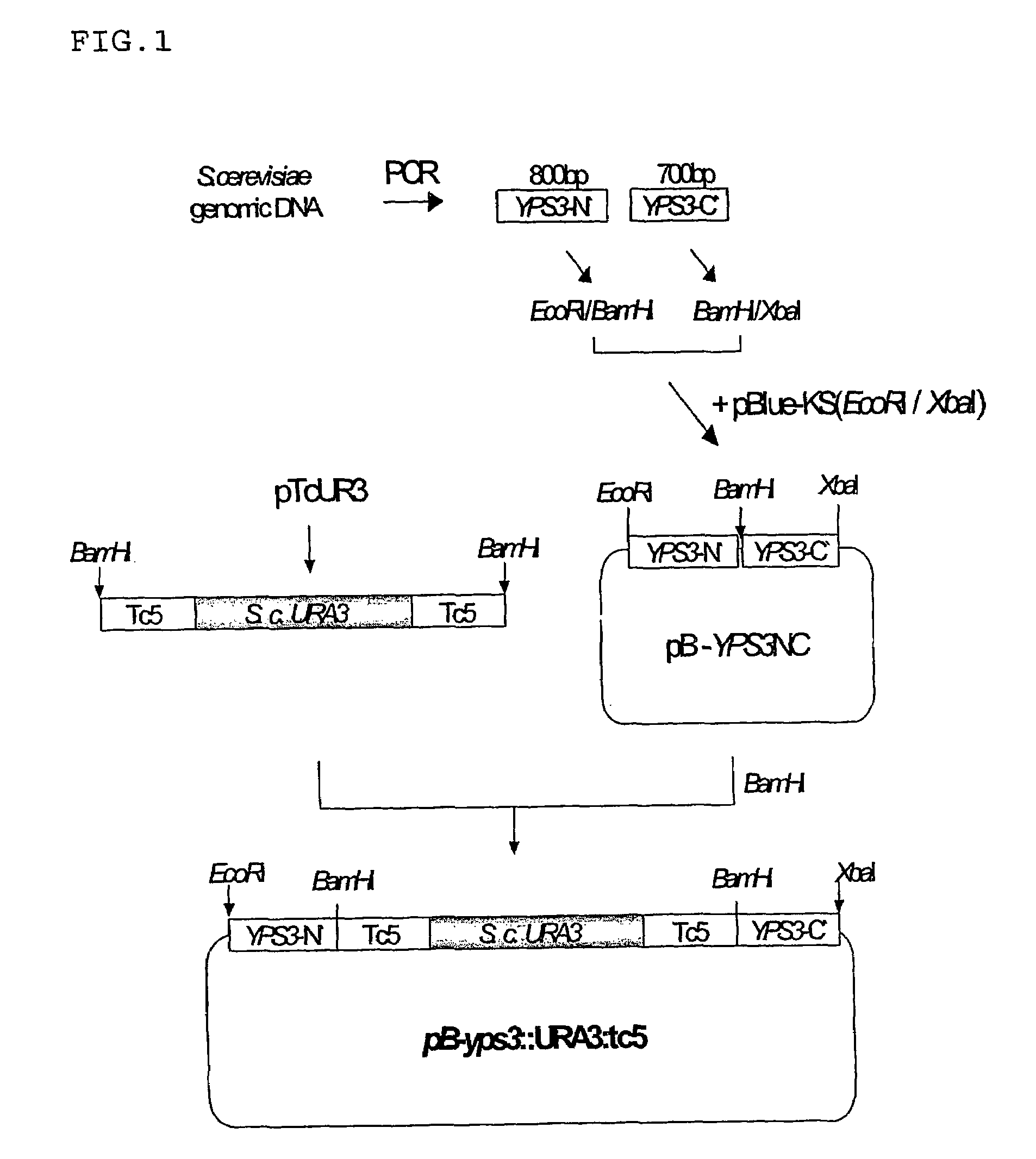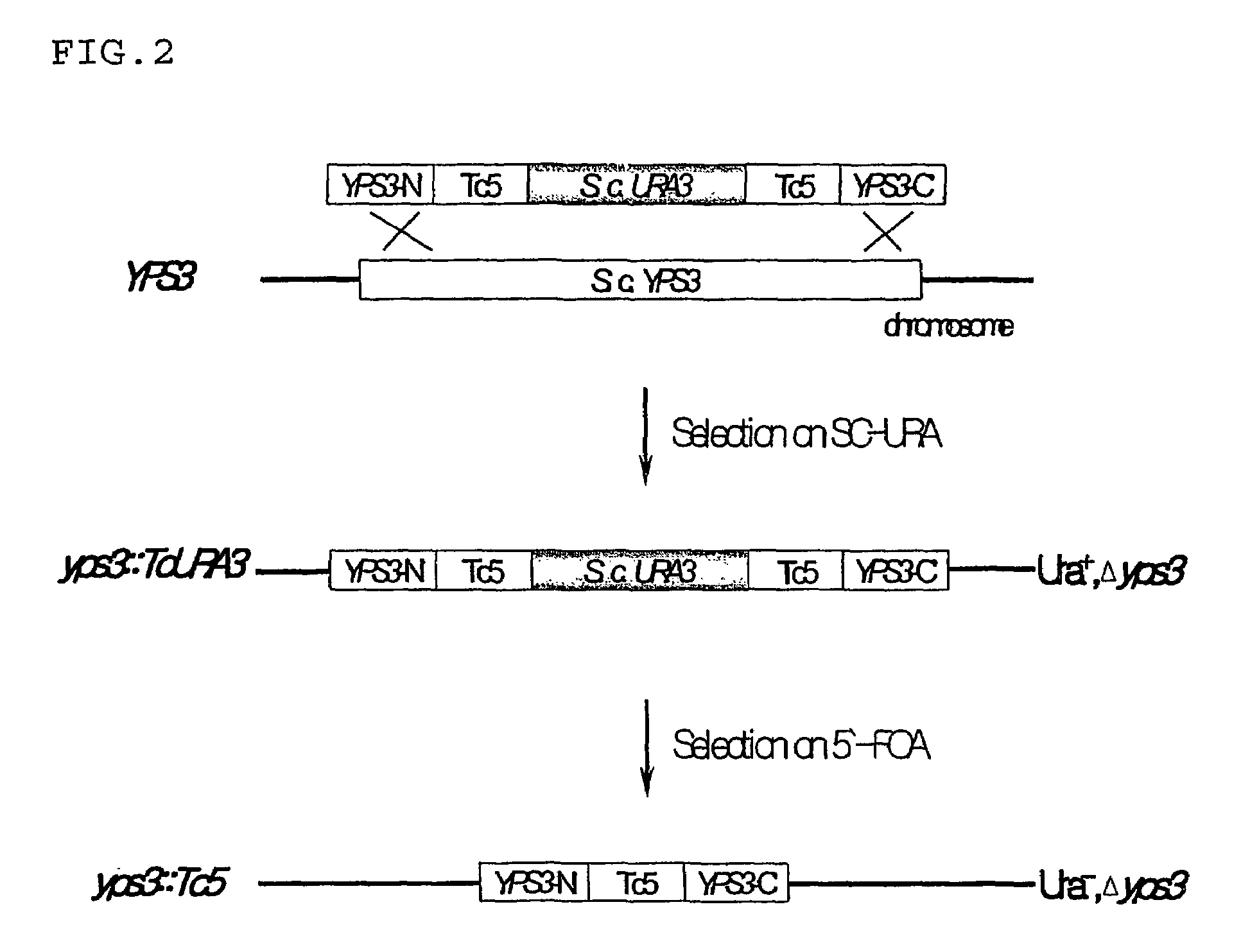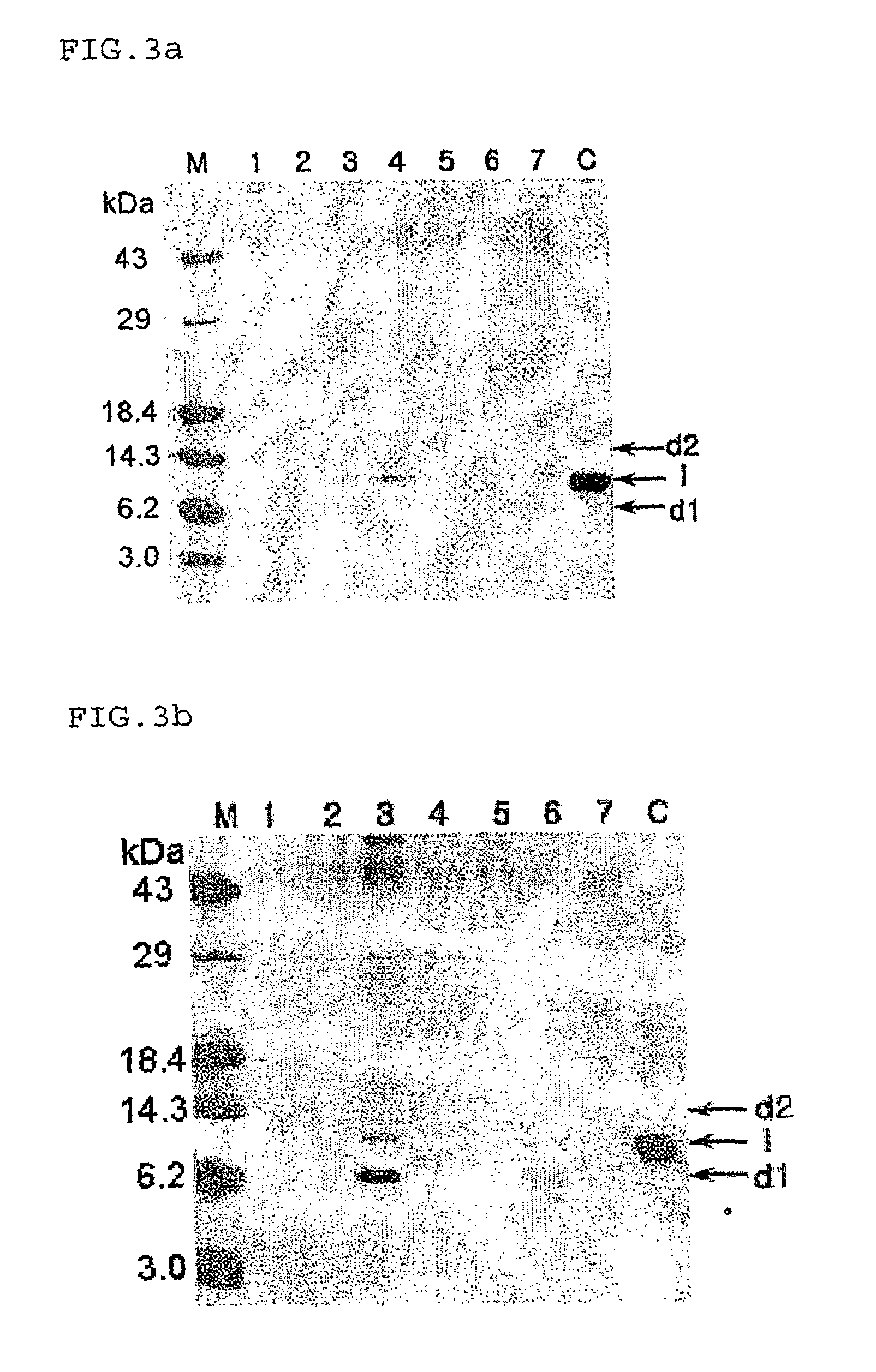Yeast transformant producing recombinant human parathyroid hormone and method for producing the hormone
a technology of parathyroid hormone and transformant, which is applied in the field of human parathyroid hormone production, can solve the problems of obstructing bone absorption, and achieving the effect of high yield
- Summary
- Abstract
- Description
- Claims
- Application Information
AI Technical Summary
Benefits of technology
Problems solved by technology
Method used
Image
Examples
example 1
Establishment of YPS3 Gene-Disrupted Yeast Mutant
[0035]The construction of a recombinant vector containing a URA3 cassette for use in disrupting the YPS3 gene is illustrated in FIG. 1.
[0036]N- and C-terminal fragments of YPS3 gene necessary for the homology recombination leading to the disruption of the YPS3 gene were produced by PCR (polymerase chain reaction) using two pairs of primers, which were synthesized on the basis of the YPS3 base sequence of Saccharomyces cerevisiae, registered in GenBank. For the convenience of gene manipulation later, a set of primers (5′-GACGAATTCCAGAAACGTCTGAGTGGAG-3′ (SEQ ID NO: 1) and 5′-GCAGGATCCGTACTCTACCGAATGCCG-3′ (SEQ ID NO: 2)) for amplifying the N-terminal fragment were designed to have recognition sites of EcoRI and BamHI at their respective 5′-terminal sites (underlined parts) while restriction sites of BamHI and XbaI were introduced into 5 ′-terminal sites of a set of primers (5′-CGCGGATCCCTATGCAGACCAGTGTGG-3′ (SEQ ID NO: 3) and 5′-CGCTCTA...
example 2
Establishment of Recombinant Yeast Strain Expressive of hPTH and Analysis of hPTH Expression
[0041]Saccharomyces cerevisiae wild-type strain 2805 and L3262, and Saccharomyces cerevisiae mutants S28Y4, SLH15 (yps3Δ), SLH16 (yps1Δ / yps3Δ), SLH17 (yps2Δ / yps3Δ), and SLH18 (yps1Δ / yps2Δ / yps3Δ) were transformed with the expression vector pG10-hPTH1, followed by the selection of Ura+ transformants. These recombinant yeast strains capable of hPTH expression were subjected to hPTH expression analysis.
[0042]The yeast mutants were pre-cultured at 30° C. for 24 hours in minimal selective broths (amino acid-deficient yeast nitrogen substrate 0.67%, glucose 2%, casamino acid 0.5%). Each of the cultures was inoculated in an amount of 2% to a YPDG medium (yeast extract 1%, bacto peptone 2%, glucose 1%, galactose 1%) and then incubated at 30° C. for 48 hours. During this incubation, samples were withdrawn at 24 hours and 48 hours. 500 μl of each sample was centrifuged at 5,000 rpm for 5 min to separate...
example 3
hPTH Expression Patterns in Yapsin Protease-Deficient Mutants
[0044]To examine the effect of the disruption of YPS1 and YPS3 genes on hPTH expression, hPTH molecules secreted from the non-transformed, wild-type Saccharomyces cerevisiae 2805, the transformed wild-type Saccharomyces 2805 / pG10-hPTH1, the transformed yps1Δ mutant S28Y3 / pG10-hPTH1, and the transformed yps3Δ mutant S28Y4 / pG10-hPTH1 were subjected to SDS-PAGE electrophoresis. The electrophoresis results are shown in FIG. 3.
[0045]As seen in the electrophoresis photographs, no hPTH-molecules were expressed in the non-transformed wild-type strain (lane 1). About 50% or more of the hPTH expressed in the transformed wild-type strain 2805 existed in the truncated d1 form (lanes 3 and 4). In the case of the yps1Δ mutant S28Y3, the truncated forms of the hPTH secreted into the media comprised 5% or less of the total hPTH when it was obtained from the 24-hour culture. In contrast, as much as about 30-40% of the hPTH obtained from th...
PUM
 Login to View More
Login to View More Abstract
Description
Claims
Application Information
 Login to View More
Login to View More - R&D
- Intellectual Property
- Life Sciences
- Materials
- Tech Scout
- Unparalleled Data Quality
- Higher Quality Content
- 60% Fewer Hallucinations
Browse by: Latest US Patents, China's latest patents, Technical Efficacy Thesaurus, Application Domain, Technology Topic, Popular Technical Reports.
© 2025 PatSnap. All rights reserved.Legal|Privacy policy|Modern Slavery Act Transparency Statement|Sitemap|About US| Contact US: help@patsnap.com



